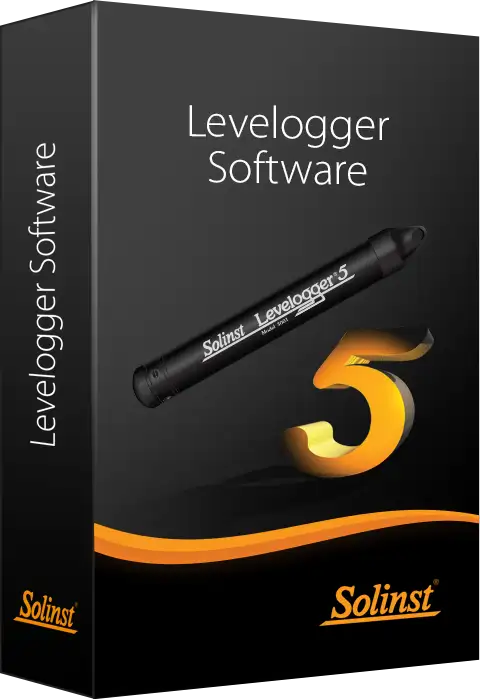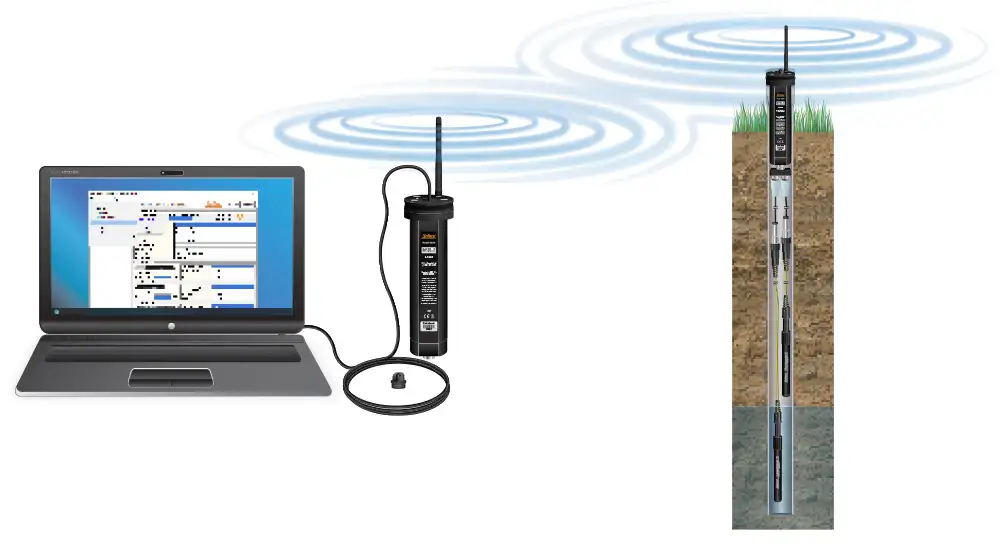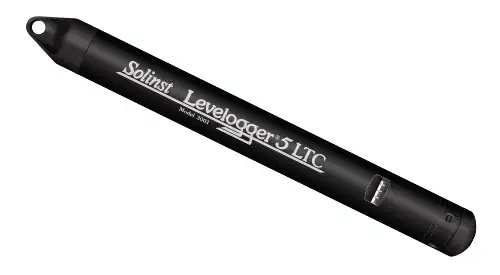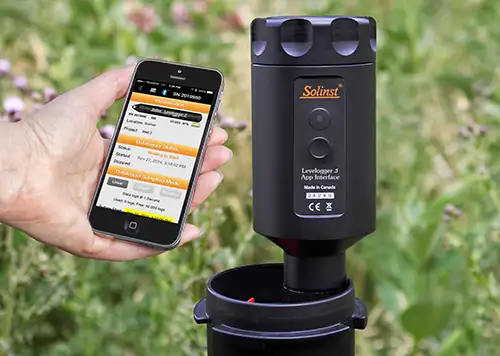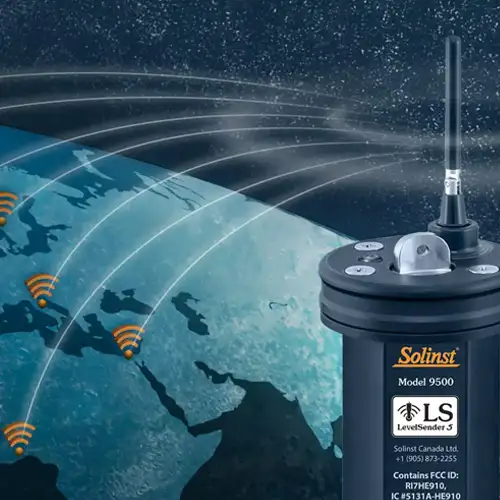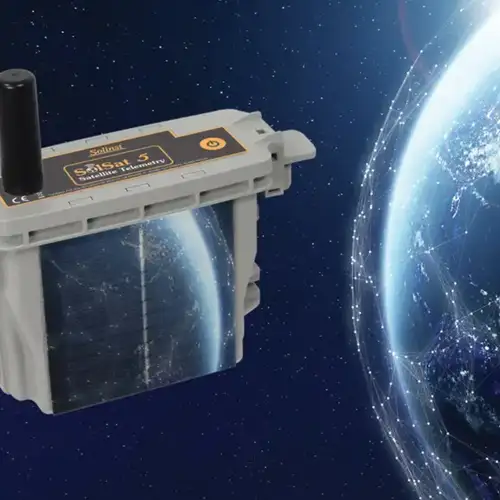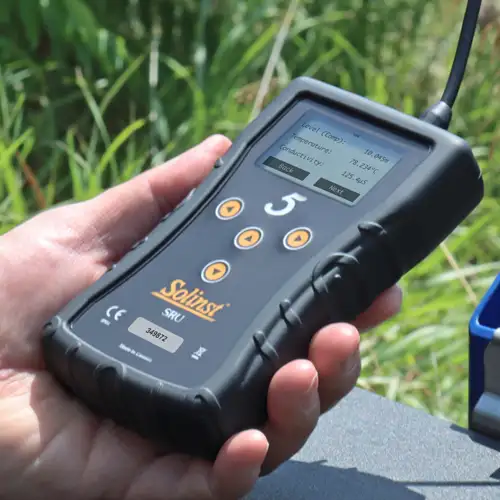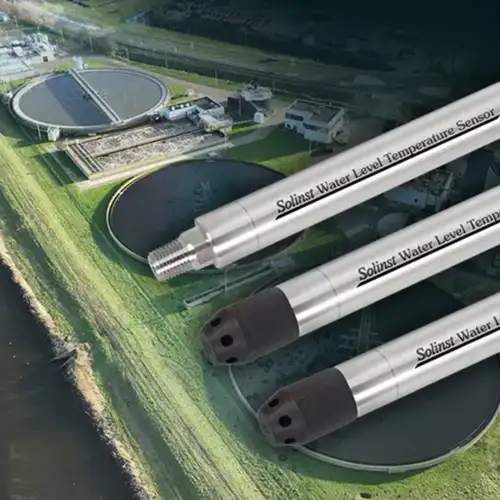
Model 9200 RRL 5 Remote Radio Link Telemetry System
Depth Discrete Groundwater Monitoring
Reduce Costs and Field Time
Simplify Remote Monitoring with Low-Cost Local Telemetry
- Robust radio transmission and data storage
- No cellular fees
- Easy setup and operation
- Adaptable to various monitoring needs
- Discreet and easy to install
- Built-in barometric compensation
The Solinst RRL 5 Remote Radio Link provides a compact, short-distance radio solution for streamlined data acquisition in small, closed-loop networks. Designed for simplicity and reliability, the RRL 5 leverages free, unlicensed radio bands (ISM) to transmit data from your Solinst dataloggers (two per station) directly to your Home Station PC. Each RRL 5 remote station is programmed and scheduled using the same intuitive software as the STS Telemetry Systems. Data is stored in an Access Database and can be exported for use in other programs, allowing self-management of the data. Perfect for mine sites, golf courses, landfills, and any application requiring a closed-loop network, the RRL 5 eliminates the ongoing costs associated with cellular telemetry.
Why Use RRL 5 Remote Radio Link Telemetry?
- Cost-Effective: Eliminates cellular data fees with free radio transmission
- Compact and Discreet: Fits seamlessly inside a standard 2″ monitoring well for unobtrusive placement.
- Barometric Compensation: Built-in barometer for accurate, barometrically compensated Levelogger readings
- Long-Range Communication: Reliable RF line-of-sight transmission up to 30 km (20 miles)
- Flexible Radio Options: Choose between 900 MHz or 2.4 GHz radio modules to suit your specific needs
- Easy Setup and Management: USB-C connection for diagnostics, firmware updates, and external power.
- Intuitive Solinst Telemetry Software for seamless configuration and data management
- Internal Data Storage: Non-volatile memory ensures data integrity until successful transmission to the Home Station
- Remote diagnostics: Remote Utility for simple diagnostics
- Long Battery life: Powered by six replaceable lithium batteries
- Conductivity, water level and temperature datalogging
- Full range 0-80,000 S/cm
- Ideal for salinity and saltwater intrusion studies, tracer tests, agricultural and stormwater run-off monitoring
- Creates a wireless connection between your Levelogger and smart device running the Solinst Levelogger App
- Program your Leveloggers to record, or view and save real-time readeings
- Download and view data collected by your Levelogger and e-mail it from your smart device
Related Products
Plug and Play Telemetry
Already own Leveloggers? Quickly and easily upgrade your monitoring wells with LevelSender Telemetry. The 4G LevelSender 5 telemetry system features an optional Solinst SIM card. It is set up for you in advance—with a low-cost plan managed by Solinst! An internal barometer provides automatically compensated water level readings; set high/low level alarms.
Discover Anywhere Monitoring
SolSat 5 is a telemetry system that leverages Iridium satellite technology to provide global connectivity for Solinst 5 Series dataloggers. It uses low cost TextAnywhere global satellite messaging to send remote data to a secure web portal. It features a robust weatherproof enclosure for installation almost anywhere. Features built-in Wi-Fi setup app, solar panel, and barometer.
Solinst Readout Unit (SRU)
The Solinst Readout Unit (SRU) is a rugged, handheld device designed to connect to a deployed Solinst datalogger and display instant water level readings – with the option of automatic barometric compensation. Real-time logging and downloaded data can be saved and transferred to a PC. Quickly check the datalogger's status.
Versatile Submersible Water Level Transmitter
The 301 Water Level Temperature Sensor provides the option of highly accurate water level transmission using multiple protocols – MODBUS, SDI-12 and 4-20mA – for a wide variety of applications. This compact, all-in-one submersible hydrostatic level transmitter provides continuous, stable water level and temperature readings, with options for absolute and gauged pressure sensors.

